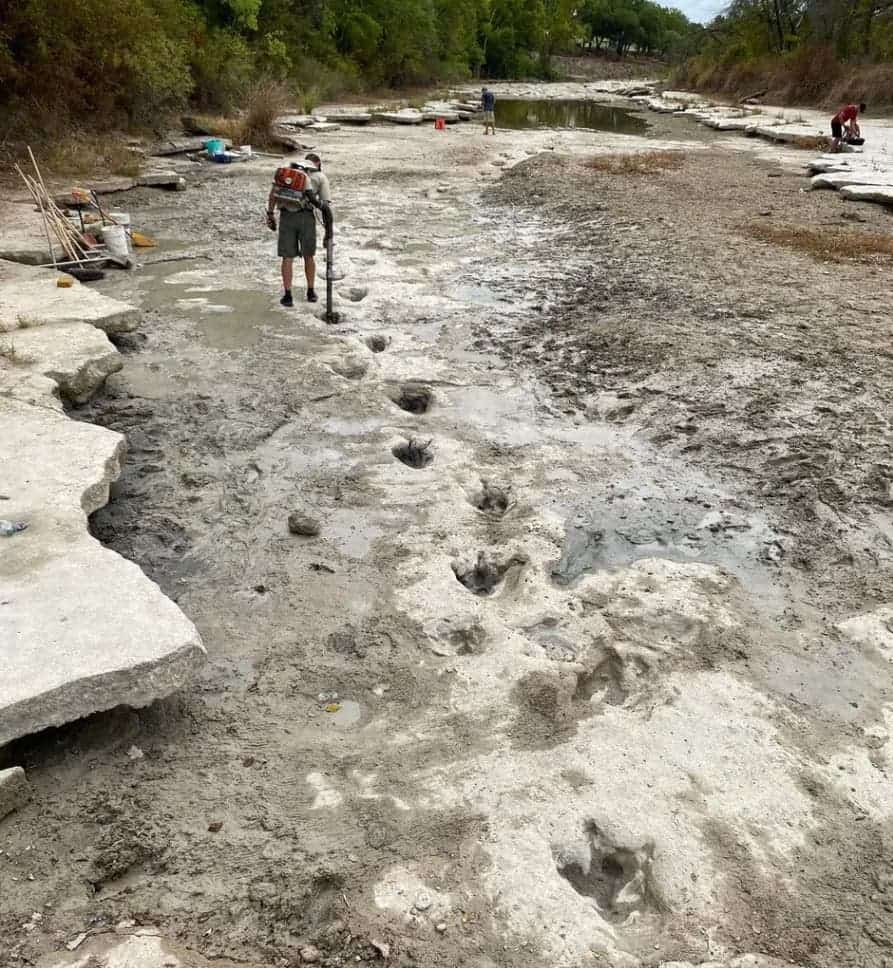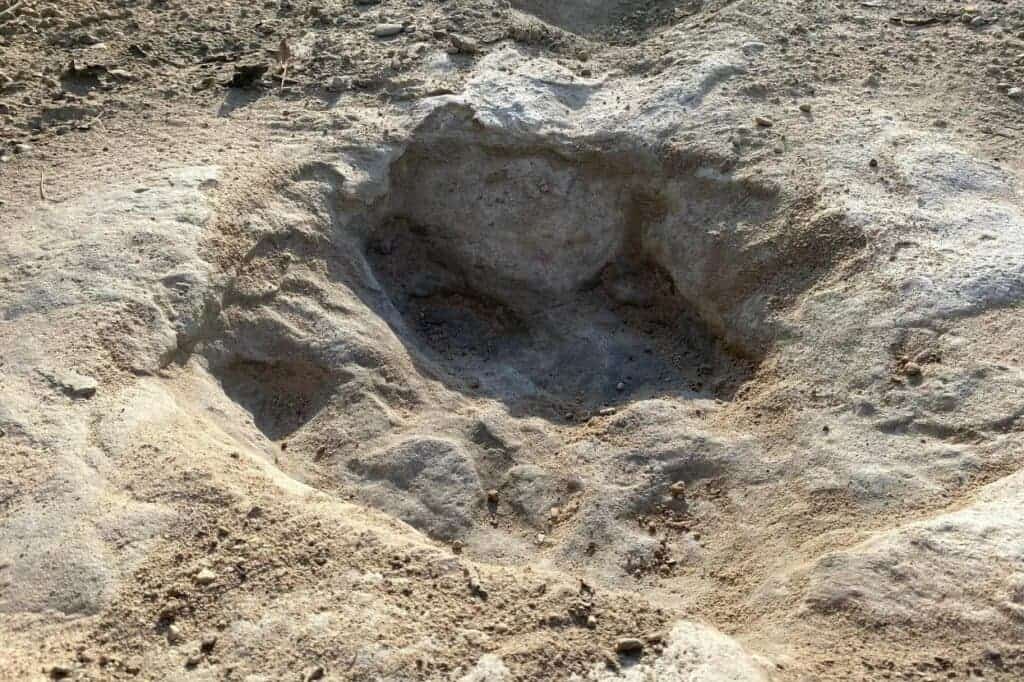The dramatic drought that’s gripping the world yields unexpected fruit in Texas: a set of dinosaur prints from 113 million years ago.

As the planet is straining under high heat and low precipitation, waterways everywhere are starting to run low. Earlier this month, we saw a chilling reminder of this fact in the hunger stone revealed by the dwindling river Elbe in Germany. Now, another draining river halfway around the world reveals a new hidden item — one that isn’t as ominous, thankfully.
The river in question, the Paluxy River, flows through Texas’ Dinosaur Valley State Park. Its water levels have been massively impacted by the drought gripping the state, exposing a set of tracks from dinosaurs some 113 million years old, according to officials with the Texas Parks and Wildlife Department.
Dry footprints
“Due to the excessive drought conditions this past summer, the river dried up completely in most locations, allowing for more tracks to be uncovered here in the park,” explains Stephanie Salinas Garcia of the Texas Parks and Wildlife Department. “Under normal river conditions, these newer tracks are underwater and are commonly filled in with sediment, making them buried and not as visible.”
Personnel at the park posted photos of the three-toed footprints on Facebook after discovering them. These prints lead down along a dry riverbed and create “one of the longest dinosaur trackways in the world” according to one of the captions alongside the images.

Most of these tracks were made by Acrocanthosaurus, a predatory dinosaur species that could grow to 15 feet (4.5 m) in height and weigh almost 7 tons as an adult. Another species that left tracks here is Sauroposeidon, a giant plant-eater that could reach 60 ft (18.5 m) in height and weigh an astonishing 44 tons.
While these dinosaurs still lived, the land of the state park (currently located in an inland area southwest of Dallas) formed the border of an ancient ocean. The abundance of muddy ground there made for ideal footprint-forming conditions. The area itself is well-known for dinosaur footprints; similar tracks have been collected from the Paluxy River in 1938 and are on display at the American Museum of Natural History in New York City.
The prints were discovered Saturday by Louis Jacobs, a vertebrate paleontologist and an emeritus professor of earth sciences at Southern Methodist University. According to him, they join already-known dinosaur trackways, adding almost 150 new imprints.
The current drought is the only reason why these prints were discovered, as they were previously covered by the Paluxy River. Still, rains are expected in the river’s watershed soon, meaning that the tracks will likely soon be covered once again.
“While they will soon be buried again by the rain and the river, Dinosaur Valley State Park will continue to protect these 113 million-year-old tracks not only for present, but future generations,” Garcia said.






